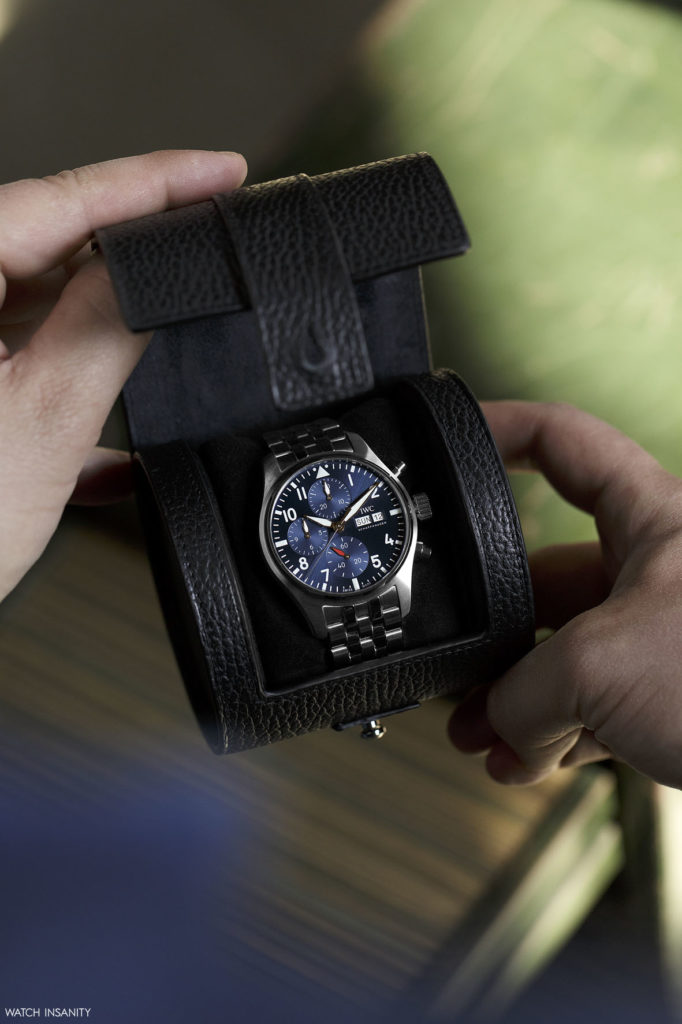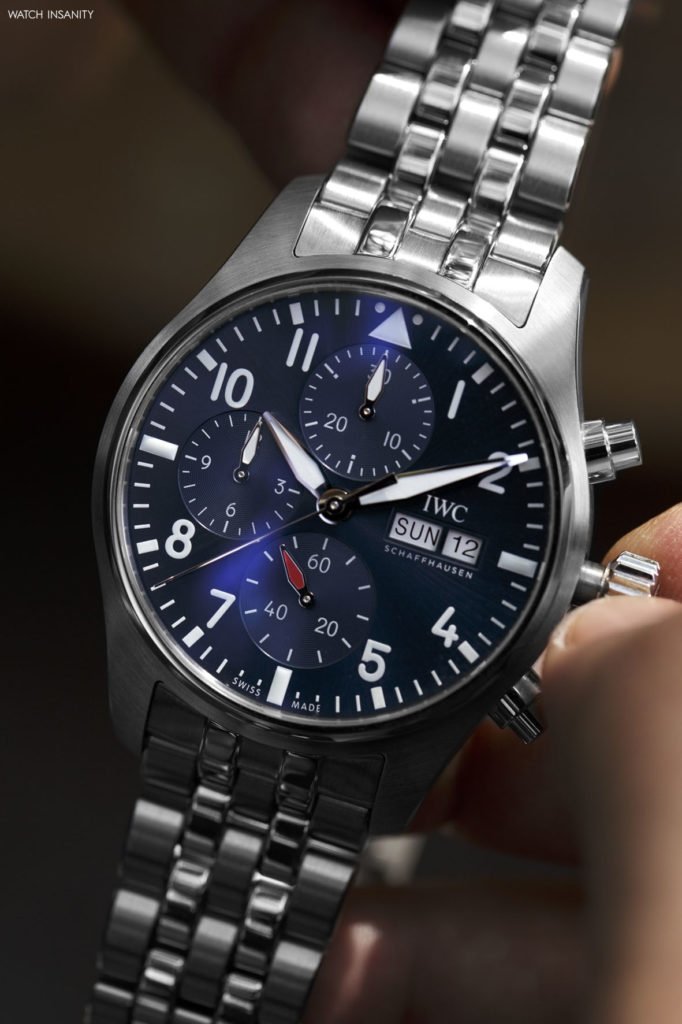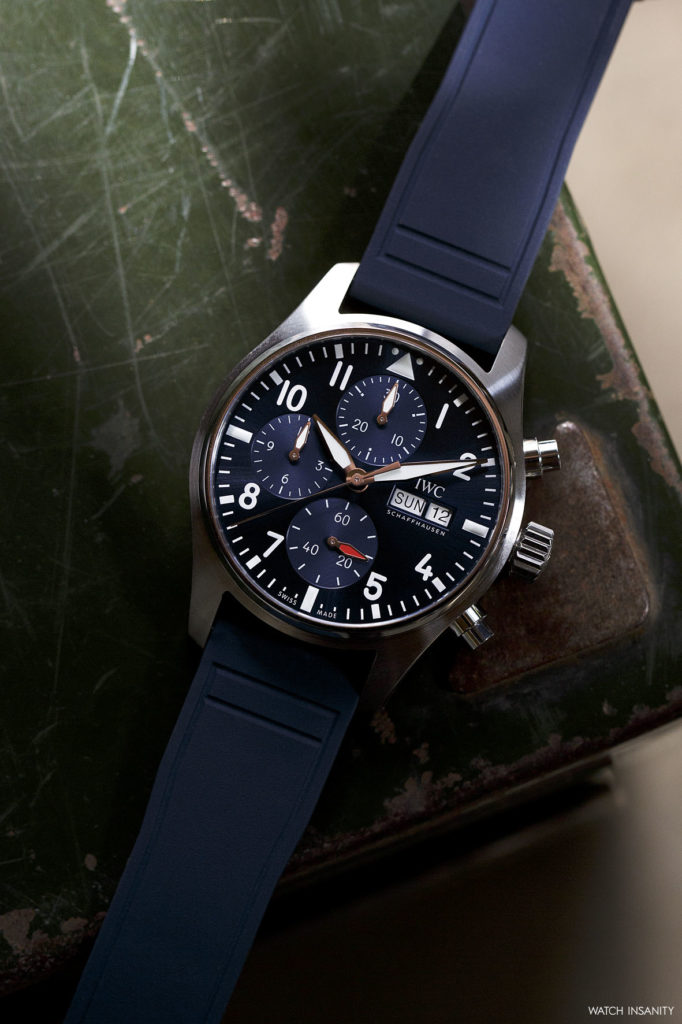Come fly with me: IWC Back To Flight With The New Pilot’s Watch Chronograph 2021
7 April 2021“Inventing an airplane is nothing. Building one is something. Flying is everything.” With this sentence, German aviation pioneer Otto Lilienthal expresses the sense of excitement that has always accompanied man in flight, first in the attempt, then in the experience of it. An experience that, to be faced, needed and still needs reliable tools – watches above all. A brand such as IWC – with its strong connection to aviation thanks to the Pilot’s collection – is proud of its tradition.
IWC AND FLIGHT: A BIT OF HISTORY
The history of IWC’s Pilot’s watches dates back to the pioneering years of flight, when wristwatches – sometimes worn on the thigh – were an essential tool for a pilot’s survival. They were mainly used to keep track of flight time or to monitor the engine’s running hours, but they were also useful tools for visual flight navigation, considering that flight instruments would come much later. The combined use of the watch and a sextant allowed the pilot to determine his position using astronomical navigation.
Hans and Rudolf Homberger, two sons of Ernst Jakob Homberger, owner of IWC in the 1930s and 1940s, knew this well. Both got commercial pilot licenses in England and Rudolf fought in World War II as a fighter pilot for the Swiss air force; in 1940 he was shot down (but he survived) by Nazi fighters who had violated Swiss airspace.

Based on their experience, in 1936 IWC created and developed in Schaffhausen the Special Pilot’s Watch, whose design and technical features included an antimagnetic escapement and shatterproof front glass. In addition, the watch worked at temperatures between -40 and +40 Celsius degrees, an essential feature as the cockpits were unheated at the time.
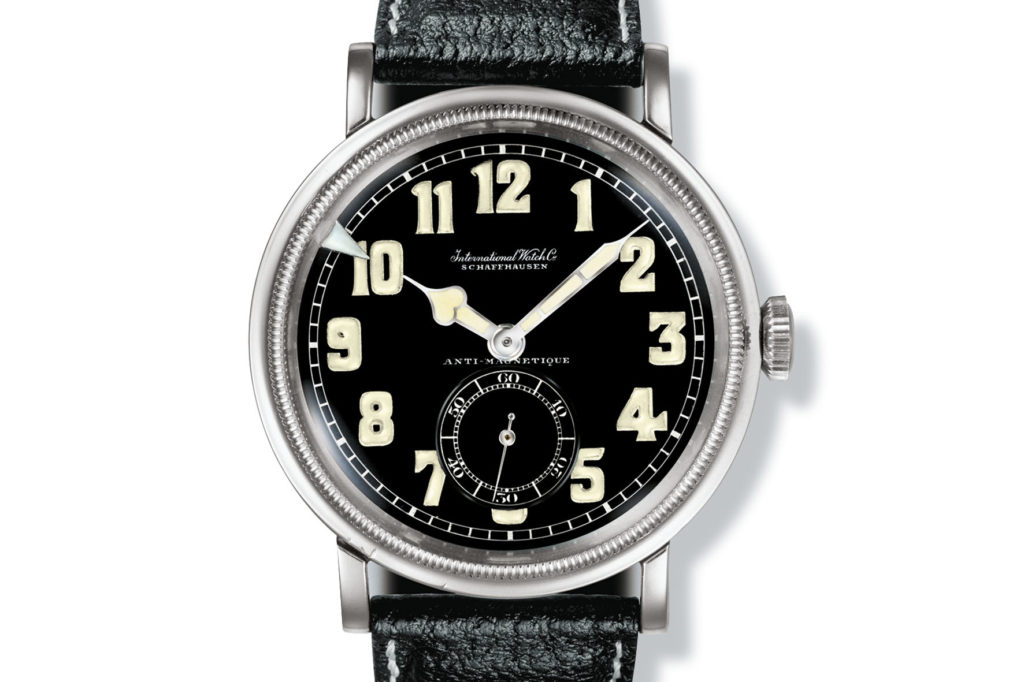
FROM WWII TO THE PRESENT DAY
It was the beginning of a long history which still continues today, and which saw – during the Second World War – the birth of the Big Pilot’s Watch, an IWC watch that would influence the design of the brand’s professional timepieces throughout the century and beyond. The large conical crown, crafted to be handled even by pilots wearing flight gloves, and the design similar to that of the aircraft cockpit instruments, made it unmistakable.

That reference, the IW 431, met the stringent requirements set for military watches. The huge 55 mm case, the 16.5 mm thickness, and a considerable weight of 183 grams were its main features, making it the largest wristwatch ever created by IWC.
In order to find the brand’s most famous pilot watch, the Mark 11, you had to wait for WWII to be over: it was developed and produced in 1948 for the British Royal Air Force. Based on the Caliber 89, its movement was protected by a soft-iron inner case that shielded it from the strong electromagnetic fields generated by the onboard radars. This case dissipated the radiation around the movement like a Faraday cage.
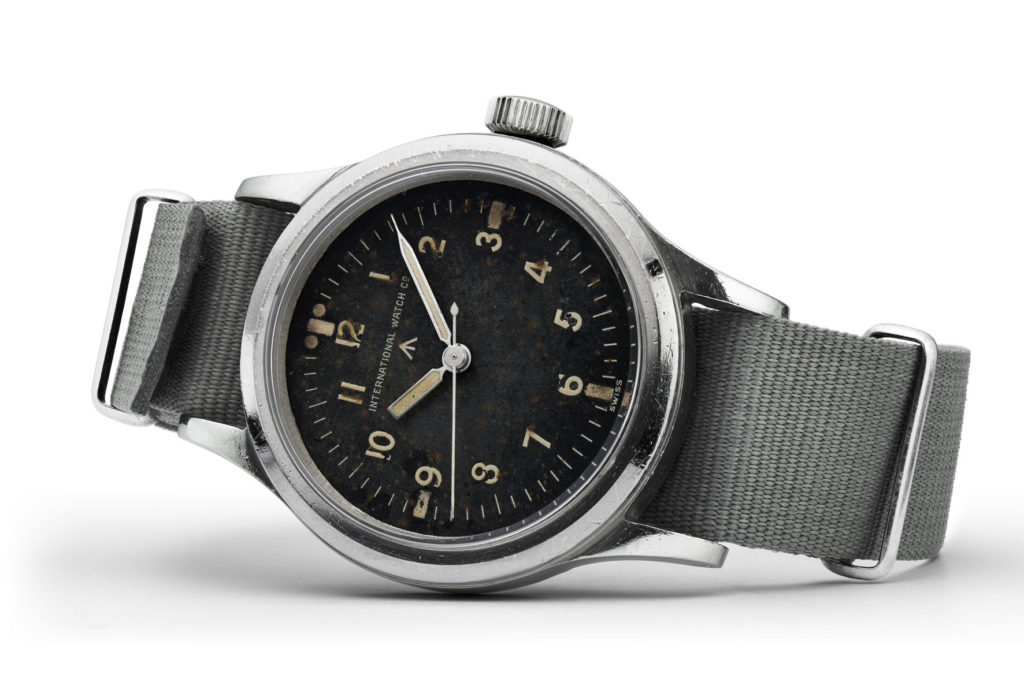
Another important feature of the Mark 11 was the special securing of the front glass, designed to ensure that it did not go loose in the event of a sudden pressure drop inside the cockpit. The clear and high-contrast structure of the dial, thanks to the well-luminescent elements, ensured that pilots could always read the time easily, regardless of the visibility conditions.

Between the 90s and the 2000s, IWC’s strong development of the Pilot’s references led to the creation of models such as the Double Chronograph (1992), the Chronograph Ceramic (1994), the Big Pilot’s Watch (2002) and several Top Gun references dedicated to the US Navy’s Fighter Weapons School, with a ceramic (2007) or Ceratanium (2019) case. Among them, the Chronograph has always had a place of honor: so, this year it is the star among the collections presented by the brand at Watches & Wonders.
THE NEW IWC PILOT’S WATCH CHRONOGRAPH
IWC reduced the new Pilot’s Watch Chronograph’s case size, from the classic 43 mm to 41 mm. A trend, that of reducing the cases’ size, which other brands are also pursuing, in order to reach enthusiasts with thinner wrists. Talking about this Chronograph, the 41 mm is really well crafted, as you can see from the blue dial chrono starring in our shooting.

A very special, seductive and unmistakable IWC blue. The soleil finishing of the dial, darker in the lower part and more nuanced as you move towards 12 o’clock, contrasts with the côtes circulaires finishing of the chronograph counters. The indexes and hands, generously covered with photoluminescent material, allow an optimal reading of the time even in poor visibility conditions.
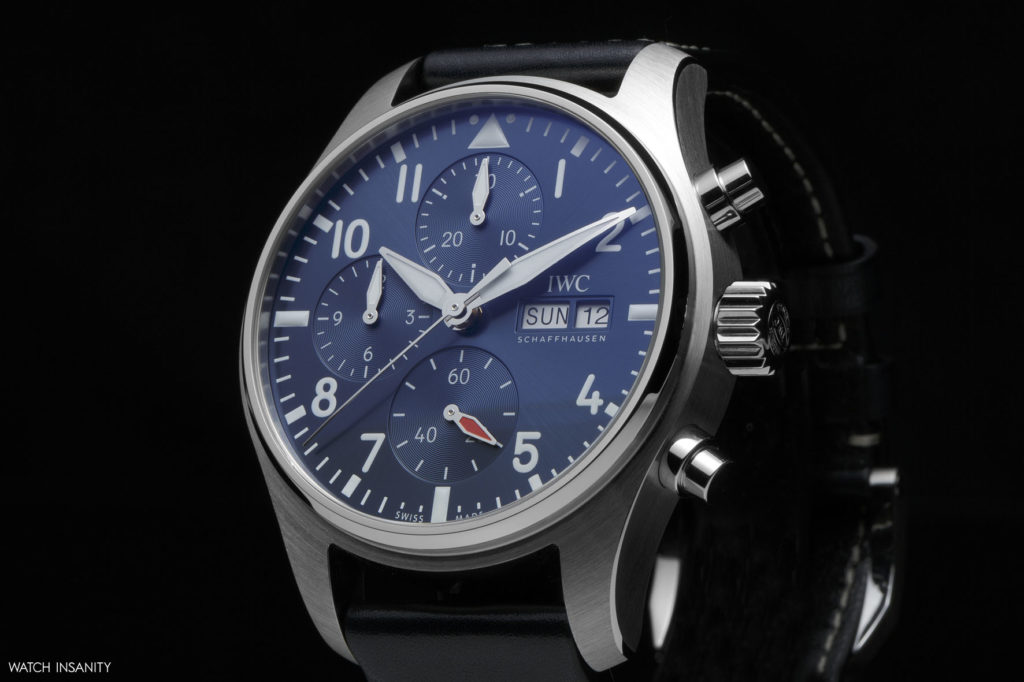
The stainless steel case alternates polished finishing, such as that of the bezel, with other satin finishing, while the pushers and the crown, both easy to use, accentuate the sporting vocation of the watch. The mid-sized lugs, combined with the reduced size of the case, increase the wearability of the Pilot’s Watch Chronograph.
Our shots clearly enhance the beautiful blue dial, which, however, should not distract us or make us forget that the real revolution of the Pilot’s Watch Chronograph 2021 lies within its case.
The chronograph is powered by the in-house caliber 69385, an automatic movement with 28,800 vibrations / hour made up of 231 individual parts which make robustness, reliability and precision its main characteristics. The bi-directional winding system builds up a power reserve of 46 hours when fully wound. The chronograph is controlled by a column wheel.
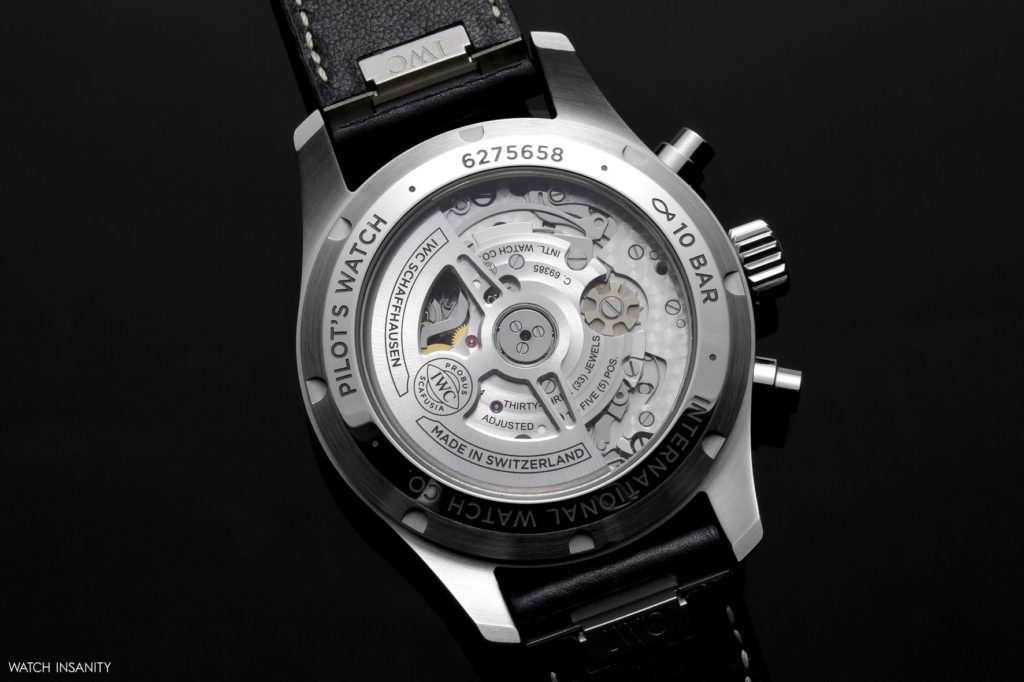
To allow to easily admire the new movement, IWC replaced the classic steel caseback with a sapphire crystal one, so that it is possible to observe the caliber running. The transparent caseback does not compromise the water resistance of the watch, guaranteed up to 10 bar.
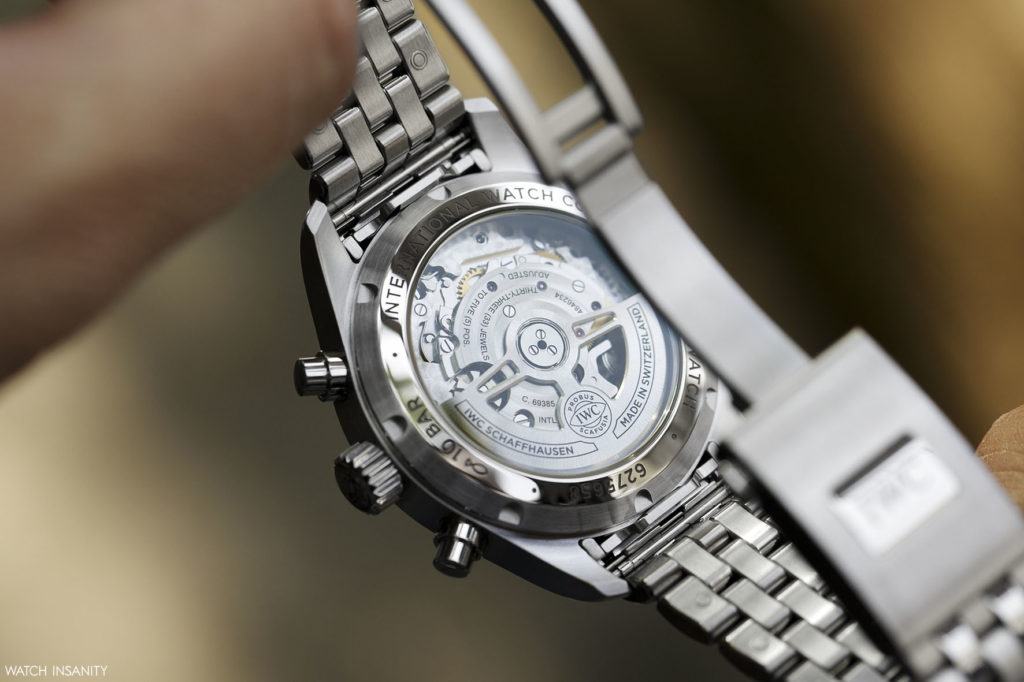
Last but not least, all the references of the new Pilot’s Watch Chronograph are equipped with a system that allows the wearer to quickly and easily change the strap or bracelet. In addition to those supplied with the watch, IWC has a wide selection available both in its boutiques and on the IWC.com website; they range from leather and rubber straps to stainless steel bracelets, which now have a more subtle design and a fine adjustment system, improving their wearability.
The watch is available in four references: with blue dial and leather strap or steel bracelet, with green dial and leather strap or steel bracelet. (Price € 7.000)
THE BIG PILOT’S WATCH 2021
In addition to the Pilot’s Watch Chronograph, at Watches & Wonders IWC presented some new versions of the Big Pilot’s Watch, whose dial has always been characterized by a clear reference to the instruments in aircraft cockpits. Its 46.2 mm oversized case made it become a symbol of the Schaffhausen brand.
One reference of the Big Pilot’s Watch presented in Geneva has a new configuration with a 43 mm case, while two references are in the Top Gun Mojave Desert configuration, recognizable by the sand-colored ceramic case: one classic version, the other with a perpetual calendar.
But there is no need to reveal all the details here. The new IWC collections related to the world of aviation are beautiful and interesting: to better appreciate them, we’ll come back soon with an article exploring further the Big Pilot’s Watch 2021. Stay tuned.
By Davide Passoni

